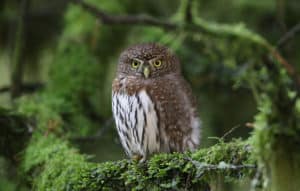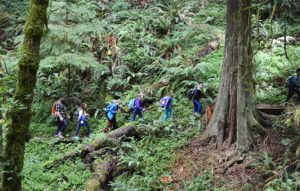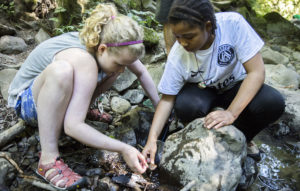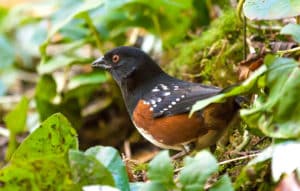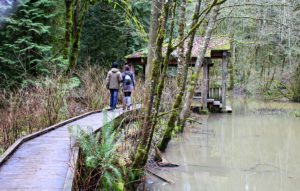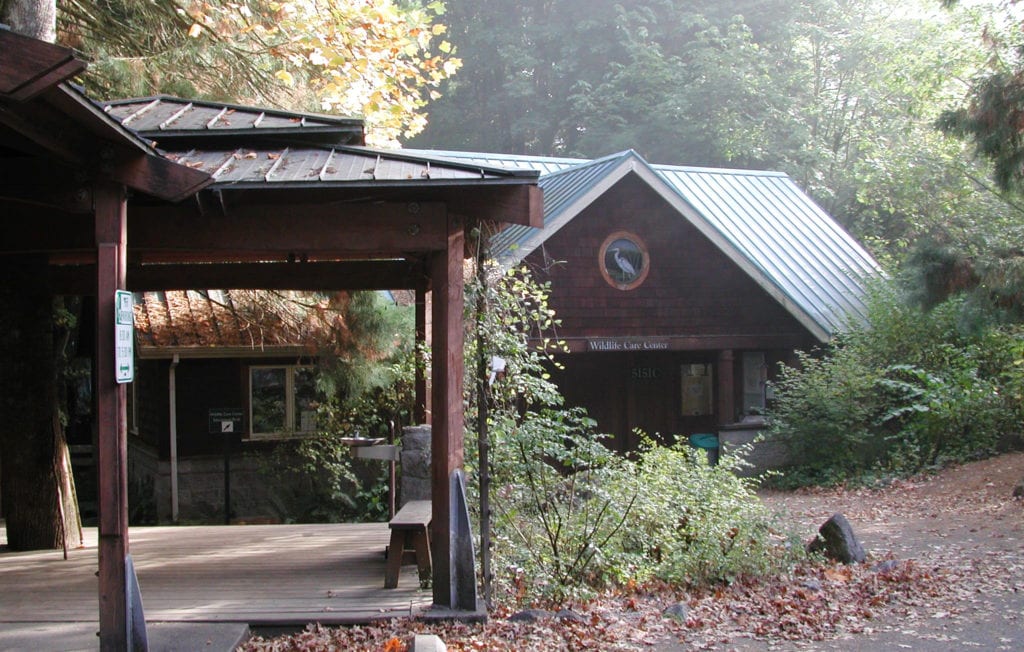Bird Alliance of Oregon Wildlife Sanctuary
Bird Alliance of Oregon’s 172-acre Wildlife Sanctuary is nestled against Forest Park just ten minutes from downtown Portland. The free-to-the-public sanctuary is family friendly, has more than four miles of forested hiking trails, and is a safe-haven for native flora and fauna. Our on-site facilities include the Wildlife Care Center, outdoor enclosures where you can meet educational birds, an interpretive center which features exhibits and places to watch birds, and the Nature Store. Click here for directions and our trail map, and information on our accessibility.
Visit us at 5151 NW Cornell Road, Portland, OR 97210
Current Closures
- The Wren Trail is permanently closed.
- Access to the pond and pond pavilion are temporarily closed and inaccessible to the public, while repairs are being made.
What to Know Before You Arrive
- The wildlife sanctuary is free to the public and family friendly.
- Our trails are open from dawn until dusk. View our trail map.
- The interpretive center and Nature Store are currently open for in-person visits.
- No dogs are allowed on Bird Alliance of Oregon’s Wildlife Sanctuary trails, please. Birds and other animals have keen senses of sight, smell and hearing; they think of dogs – even the friendliest ones – as predators. Upper Macleay in Forest Park is dog friendly and right next to our sanctuary.
- Our sanctuary is smoke and fire free.
- We do not offer public rentals.
- Be considerate and respectful of the wildlife, the land, and other visitors.
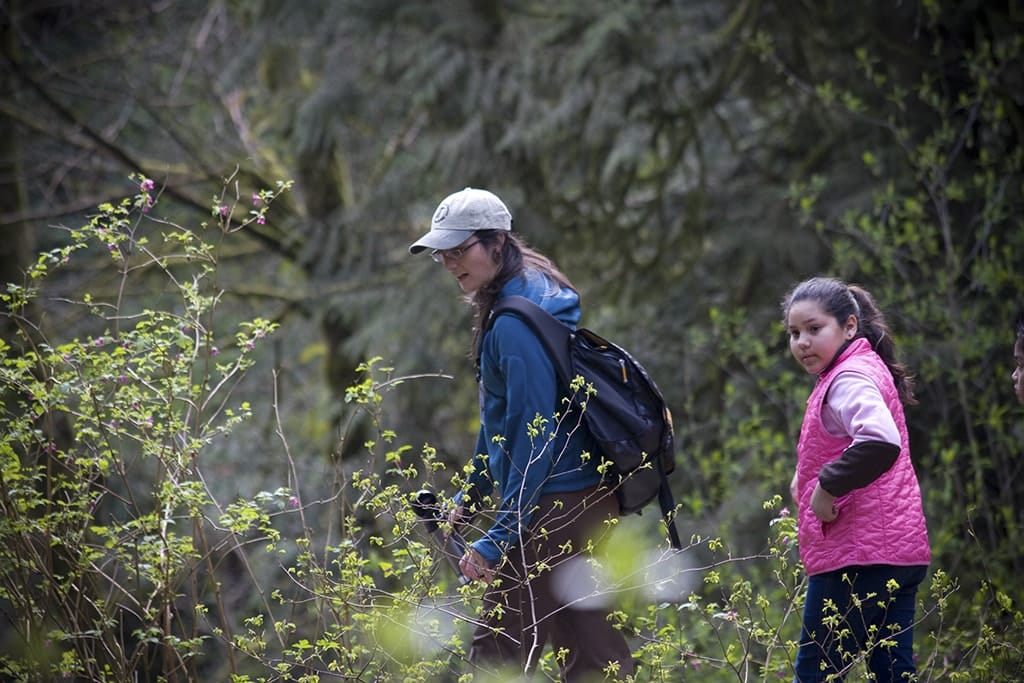
Plants and Wildlife
Walk our trails to find plant species like Western Red Cedar, Douglas Fir, Vine Maple, and Western Hemlock, with understories of Salal, Sword Fern, Trillium, and Thimble Berry. A small stand of old-growth Douglas Firs stands as testimony to the giants that once graced the temperate rainforests of the Pacific Northwest.
Listen, look for sign, and watch for wildlife like Northern Pygmy Owls, Anna’s Hummingbirds, Varied Thrush, Steller’s Jays, Pacific Wrens, Pileated Woodpeckers, Wilson’s Warblers, Chestnut-backed Chickadees Coastal Giant Salamanders, Red-legged Frogs, Rough-skinned Newts, and Douglas Squirrels. View our bird checklist for the sanctuary!
History of the Land
Histories of Native Peoples and Post Settler History
Bird Alliance of Oregon worked with David Lewis PhD to put together a detailed history of Native peoples and their use and early settlement of the land that became the Bird Alliance of Oregon Society’s Wildlife Sanctuary.
Read History of Native Uses of the Land
History of the Bird Alliance of Oregon Wildlife Sanctuary
The 172-acre Bird Alliance of Oregon Wildlife Sanctuary exists today thanks to families and donors who have permanently attached their legacies to Bird Alliance of Oregon through generous acts to expand this special place and protect habitat and wildlife.
1929: Bird Alliance of Oregon’s acquires it’s first piece of land, when 12 acres of a former dairy farm were purchased with private funds.
1930: The Pittock family donated 18 acres.
1982/1983: Additional land protections occurred in 1982, establishing the 34-acre Uhtoff Sanctuary.
2008: The 86-acre Collins Sanctuary, owned by Metro and managed by Bird Alliance of Oregon, was added to the sanctuary.
2018: The Kehoe family donated 22-acres, adding the Katherine Lynn Kehoe Sanctuary.

